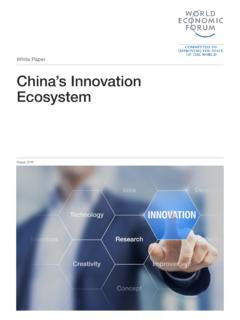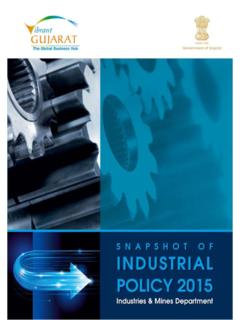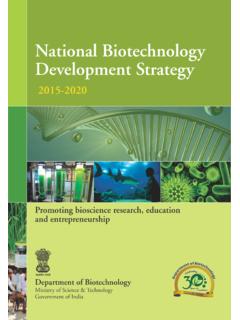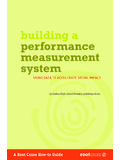Transcription of The Cluster Scoreboard - OECD.org
1 Please cite this paper as:Temouri, Y. (2012), The Cluster Scoreboard : Measuringthe Performance of Local Business Clusters in theKnowledge Economy , OECD Local Economic andEmployment Development (LEED) Working Papers,2012/13, OECD Local Economic andEmployment Development (LEED)Working Papers 2012/13 The Cluster ScoreboardMEASURING THE PERFORMANCE OF LOCALBUSINESS CLUSTERS IN THE KNOWLEDGEECONOMYYama Temouri THE Cluster Scoreboard MEASURING THE PERFORMANCE OF LOCAL BUSINESS CLUSTERS IN THE knowledge ECONOMY Yama Temouri 2 TABLE OF CONTENTS EDITORIAL NOTE .. 4 SUMMARY .. 5 INTRODUCTION .. 6 THE SELECTED CLUSTERS .. 7 THE Scoreboard .. 11 Entrepreneurialism.
2 11 Indicator .. 11 Rankings .. 12 Key findings .. 14 Employment .. 14 Indicator .. 14 Rankings .. 15 Key findings .. 17 Economic growth (turnover) .. 17 Indicator .. 17 Rankings .. 18 Key findings .. 20 Economic growth (profitability) .. 21 Indicator .. 21 Rankings .. 22 Key findings .. 24 Financial viability (liquidity ratio) .. 24 Indicator .. 24 Ranking .. 24 Key findings .. 27 Financial viability (solvency) .. 27 Indicator .. 27 Rankings .. 28 Key findings .. 30 The composite indicator .. 30 Indicator .. 30 Rankings .. 30 Key findings .. 33 CONCLUSIONS .. 33 ANNEX I THE Scoreboard METHODOLOGY .. 34 3 The ORBIS database .. 34 The identification of clusters .. 35 The indicators .. 35 Methodological caveats.
3 35 ANNEX II THE Scoreboard CLUSTERS IN DETAIL .. 37 REFERENCES .. 41 Tables Table 1. List of high-tech manufacturing clusters in the Scoreboard .. 9 Table 2. List of knowledge -intensive services clusters in the Scoreboard .. 10 Table 3. Ranking of HTM clusters by proportion of young firms (aged below 5 years) .. 12 Table 4. Ranking of KISA clusters by proportion of young firms (aged below 5 years) .. 13 Table 5. Ranking of HTM clusters by employment growth rate .. 15 Table 6. Ranking of KISA clusters by employment growth .. 16 Table 7. Ranking of HTM clusters by turnover growth .. 18 Table 8. Ranking of KISA clusters by turnover growth .. 19 Table 9. Ranking of HTM clusters by profitability growth .. 22 Table 10.
4 Ranking of KISA clusters by profitability growth .. 23 Table 11. Ranking of HTM clusters by liquidity ratio .. 25 Table 12. Ranking of KISA clusters by liquidity ratio .. 26 Table 13. Ranking of HTM clusters by solvency ratio .. 28 Table 14. Ranking of KISA clusters by solvency ratio .. 29 Table 15. Ranking of HTM clusters by the composite indicator .. 31 Table 16. Ranking of KISA clusters by composite indicator .. 32 4 EDITORIAL NOTE This report has been prepared by Yama Temouri of Aston University, United Kingdom, as part of the programme of work of the Local Economic and Employment Development Committee of the Organisation of Economic Co-operation and Development on boosting entrepreneurship, under the supervision of Jonathan Potter and Marco Marchese of the OECD LEED Secretariat.
5 Advice and support was provided by Chris Jones (Aston University) and Stefano Menghinello (ISTAT). 5 SUMMARY The OECD Cluster Scoreboard presents results on the entrepreneurship performance of 80 selected local enterprise clusters in two key innovative sectors with important roles in local economic growth; high-technology manufacturing (HTM) and knowledge -intensive service activities (KISA). It is based on data from ORBIS, a commercial database collecting demographic, economic, and financial information at the company-level. This has the advantages of enabling presentation of data for functional Cluster areas built up from municipality level rather than larger regions, enabling more timely economic analysis and providing information on financial performance not available from standard sources.
6 At the same time care has been taken to assess the quality of the data and address issues of representativeness and bias. The performance of clusters is gauged across two observation periods pre-recession (2005-2007) and recession (2007-2009) through six indicators: i) share of firms aged below 5 years (entrepreneurialism); ii) employment growth; iii) turnover growth; iv) profitability growth; v) liquidity ratio growth; vi) solvency ratio growth. A set of 80 well-researched and internationally leading clusters were selected for the analysis. Coverage is not comprehensive of all clusters and other clusters not included in the Scoreboard may have had equal or better performance.
7 What this analysis permits, however, is an assessment of the performance of several leading international clusters and comparisons among them. Key findings are that the top performing clusters in the pre-recession period were the Madison research district and Silicon Valley in the United States, while during the recession the two leading clusters in HTM and KISA were the Coimbra biotech Cluster in Portugal and Daedoek science town in Korea. More generally, in the pre-recession period leading clusters were found in traditional advanced economies such as the United States, Germany and Sweden, while during the recession well-performing clusters came from a more mixed background that includes countries severely struck by the crisis such as Portugal and Ireland.
8 With the exception of entrepreneurialism and partly turnover, fluctuation across the two time periods is significant for most clusters, which suggests that clusters doing well in a phase of economic expansion have different characteristics from those that are able to grow also at a time of economic slowdown. Finally, clusters in knowledge -intensive services experienced rates of growth that were stronger than those of high-tech manufacturing clusters with regard to both employment and turnover, the two most important indicators assessed in the Scoreboard . However, the recession has made a deeper dent on KISA clusters, whose growth rates in employment and turnover, compared to the expansion phase, receded more than they did in high-tech manufacturing clusters.
9 6 INTRODUCTION Local business clusters geographic concentrations of interconnected companies, specialised suppliers, service providers, and associated institutions have received increasing attention from academics and policy makers because, rather than wiping out the influence of space, firms in the globalised knowledge economy are relying more and more on their local environment for aspects of their competitiveness, while innovation and entrepreneurship activity is significantly concentrated across space (Potter and Miranda, 2009). The advantages of business agglomerations have been known for a while. Alfred Marshall identified a market for intermediate inputs, a skilled labour force, and technology spillovers as the three key externalities that benefit firms working close to each other in related industries.
10 The concept was subsequently adapted to Italy s industrial districts, whose success in the 1970s was ascribed to a model of production resting on flexible specialisation where each small firm would specialise in a specific input and cooperate with others in the same locality to deliver a final product of quality to international markets (Piore and Sabel, 1984). A further development was by Michael Porter (1990), who referred to factor conditions, demand conditions, related industries and inter-firm rivalry as the drivers of growth in clusters, which favour innovation, competitiveness, and productivity gains at the local level. Around this seminal work has developed an extensive literature, primarily based on case studies, which has discussed at length the internal dynamics and external relationships behind successful clusters around the world (Schmitz and Nadvi, 1999; Giuliani et al.)
















